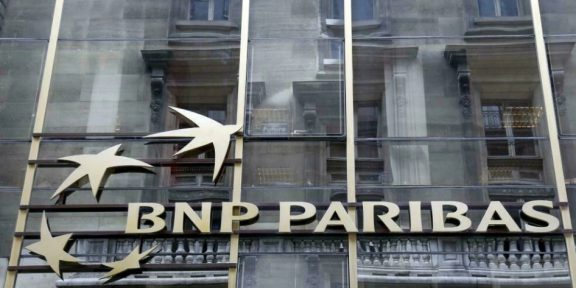More than a year has now passed since the pandemic began and many banks across Africa have reported their annual results, so this is an ideal time to analyse the current state of the banking sector and to consider the pace of change. Kicking off its Banking of the Future series, African Banker hosted a webinar entitled ‘Is the banking sector changing forever?’ to explore current trends in banking, share first-hand plans and discuss the outlook for the sector.
As might be expected, the financial results posted for the year to the end of March 2021 revealed widespread falls in both banking revenue and profits, with an overall negative outlook. However, the webinar participants represented some of the banks that have managed to grow in different ways over the course of the pandemic. They were united in their view that the Covid-19 crisis had merely accelerated the process of digitalisation that was already ongoing.
João Figueiredo, CEO of Moza Banco in Mozambique, pointed out that although nobody can live without technology, it was important to remain a relationship bank. “The way that you will make a difference in the future will be the way that you can build a relationship with your customer, how deep you go to get to know your customer, and how deep you go to understand their needs”, he said. Moza Banco, which is 70% owned by Mozambican investors, opened the country’s first digital bank branch in 2017 to help show customers how to use digital platforms and now employs 16 data scientists to better understand customer behaviour.
Figueiredo pointed out that it was not only the pandemic that had posed problems for the Mozambican banking sector over the past year but also ongoing problems within the country itself, including the insurgency in Cabo Delgado Province and cyclone damage. Perhaps surprisingly, Moza was able to break even for the first time in financial year 2020-21 at the height of the pandemic. This improvement is even more surprising given that the central bank had to intervene as recently as 2015 because of problems on the bank’s balance sheet. Figueiredo and has team were brought in to run the bank and restructure its operations from 2016, working with existing staff to achieve the turnaround. Mainly a retail bank, Moza is one of the five big Mozambican banks and was launched in 2008.
Turning a bank into a tech company
Lanre Bamisebi, Group Director IT & OPS at Kenya-headquartered Equity, said that his bank had already built its digital infrastructure before the pandemic, including moving from legacy systems to service-orientated architecture, allowing it to accelerate what it was doing when the crisis struck. Many of its 14.2m customers previously preferred to use physical branches but lockdown restrictions forced them to look to digital solutions. Bamisebi explained that Equity enabled customers to access services using their Sim cards, to allow as many as possible to utilise digital services.
Covid-19 has also changed the way that the bank’s employees work. Close to 80% of its workforce have worked from home since the start of the pandemic, while Bamisebi himself has only been to the office about a dozen times since the crisis began. He noted: “I don’t think this is going to change. I think it is the new norm.”
However, “one of the reasons why banks can’t move as fast as fintech is because of legacy”, he conceded. As a result, Equity is seeking to transform itself from a bank into a tech company, changing its structure to reflect that and removing the word ‘Bank’ from its logo as part of its digital rebranding. It registered a 53% increase in its balance sheet over the pandemic as those changes took hold, while digitalisation has enabled 98% of all transactions to take place outside its branches, with 85% on mobile or internet banking platforms, according to the annual report.
Equity now plans to build this approach into its plans to expand across Central and West Africa, as it aims to secure 100m customers within the next four years. It has now expanded into Democratic Republic of Congo, merging Equity Bank Congo with ProCredit Bank DR Congo, while Bamisebi revealed that it will probably not be launching in most West African markets as a physical bank but purely as a digital operator.
Promoting banking penetration
By contrast, Access Bank is determined to remain a bank rather than a tech company, albeit as a bank that is digitally-led, as it seeks to boost banking penetration on the African continent, Daniel Awe, Head of African Fintech Foundry, an Access Bank initiative, told the webinar. This approach certainly seemed to pay dividends over the course of the pandemic, as Access increased its number of customers from 37m to 47m and grew its profits and assets by just over 20% over the year.
At the same time as it is looking for its employees to innovate, it is also keen to identify external innovations that can be brought into the bank. “Our strategy is to go with the opportunities that we see”, said Awe. It now uses facial recognition as in-branch ID and robotics to process payments, while its loan disbursement system means that loans can be processed within five seconds. Access Bank has also developed a big data analytics team and is making use of artificial intelligence.
Regional adaptation
Cornel Dixon, Head of Africa at Backbase, which is co-hosting the webinar series, said that Africa is such a diverse continent that what works in one country or region can’t necessarily be 100% adopted in another but noted that Backbase’s work in Africa and elsewhere had revealed some very similar patterns. Some financial institutions are struggling to operate both as banks and as tech companies, perhaps because of a lack of skills and resources, and so have to bring expertise in at high cost from elsewhere.
Dixon said that digital payments were just a tool, despite the amount of interest that they attract. The biggest thing that will have an immediate impact is “identifying your customers – IYC: how banks get to know their customers: where they like to shop, what they like to do, what languages they speak, etc. The ones that get it right – they’re the ones that will succeed”, he noted.
The webinar chairperson, Pedro Besugo, posed the very important question of how you build relationships when the customer interface with the bank is via a digital platform. Banks need to learn how to communicate in a human way through digital platforms and “a lot of banks don’t actually ask their customers what they want”, said Dixon. His company Backbase has put a lot of effort into determining how banks can meaningfully engage with end users. Some customers prefer a live chat with someone at the bank when they run into problems, while others would be happy with automated responses on their chosen platform.
Awe said that Access Bank had embarked upon a process of customer experience transformation in early 2020 to create an emotional connection on digital platforms. It now allows customers to influence the appearance of their mobile app and customise their system, while offering digital rewards, with loyalty points given for every transaction that can be spent on rewards.
Neil Ford








